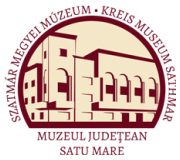Marta, Liviu: The Late Bronze Age Settlements of Petea-Csengersima (Satu Mare, 2009)
VI. Annexes
c Fig. 2. Left mandible Equus caballus, Csengersima Complex 514 Measuring spot Gc-Id Gc-p2p2-m3 Cp-Id m3-Id Gv-Cp Gv-Mn mm 414 311 167 447 275 228 213 Measuring spot Gv-C Ld p2-p4 hm3 hml wi Wd mm 253 68 84 94.5 48.5 62 42 Measuring spot ml-m3p2-p4 P2 p3 P4 ml m2 m3 mm 79 84 33/1627.5/18.5 25.3/18 23/17.5 24.2/17.5 33/15.2 Gc-gonion caudate, Id-Infradentale, Cp-condyle process, Gv-gonion ventrale, Mn-mandibular notch, C- coronion, Ed-diastema length, hm3-height at m3, wi-width at incisivus, wd-mdth at diastema, lengths and widths on the biting surface of each tooth Table 6. Dimensions of horse mandible737 Canis familiáris (dog): The great number of dog bones can be explained by their fragmentary condition. Their detailed analysis proved that 80 fragments belonged to the same individual, thus we had to consider the minimum number of individuals which was 4. Two elements originated from adults, but due to their fragmentary condition, the metrical analysis could not be done. One of the mandible fragments was assumed to originate from a small size dog (based on the ossificadon, the dog was an adult, but of short stature, Complex 514). 2. The Eăpuş II - Gáva I culture The number of preserved bones was rather small: 27 fragments found in 10 archaeological complexes. Their distribution in number and percentage is detailed in Table 7: Species No% Bos taurus 6 22,22 Sus scrofa 2 7,4 737After von den Driesch (1976) 186
